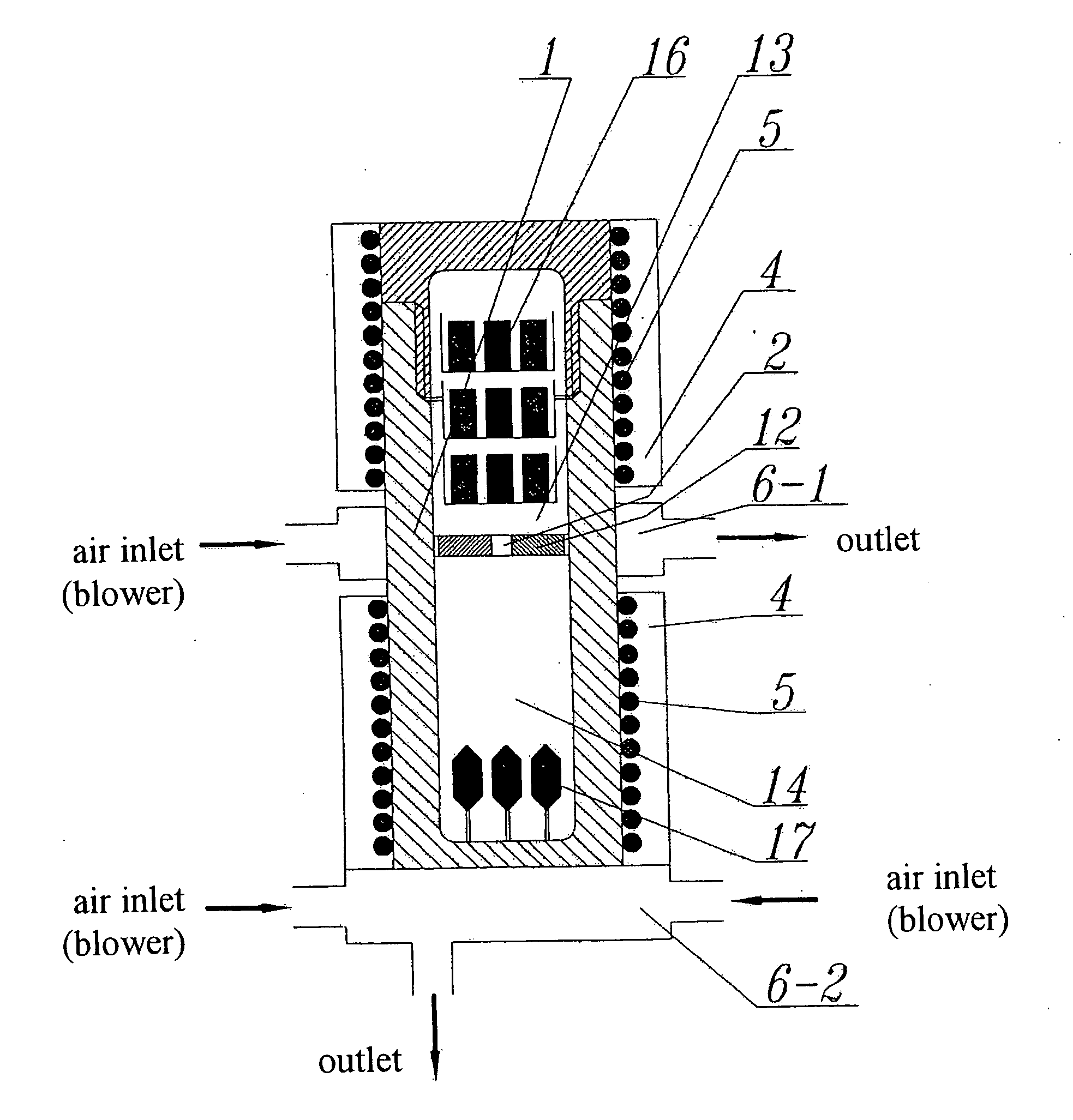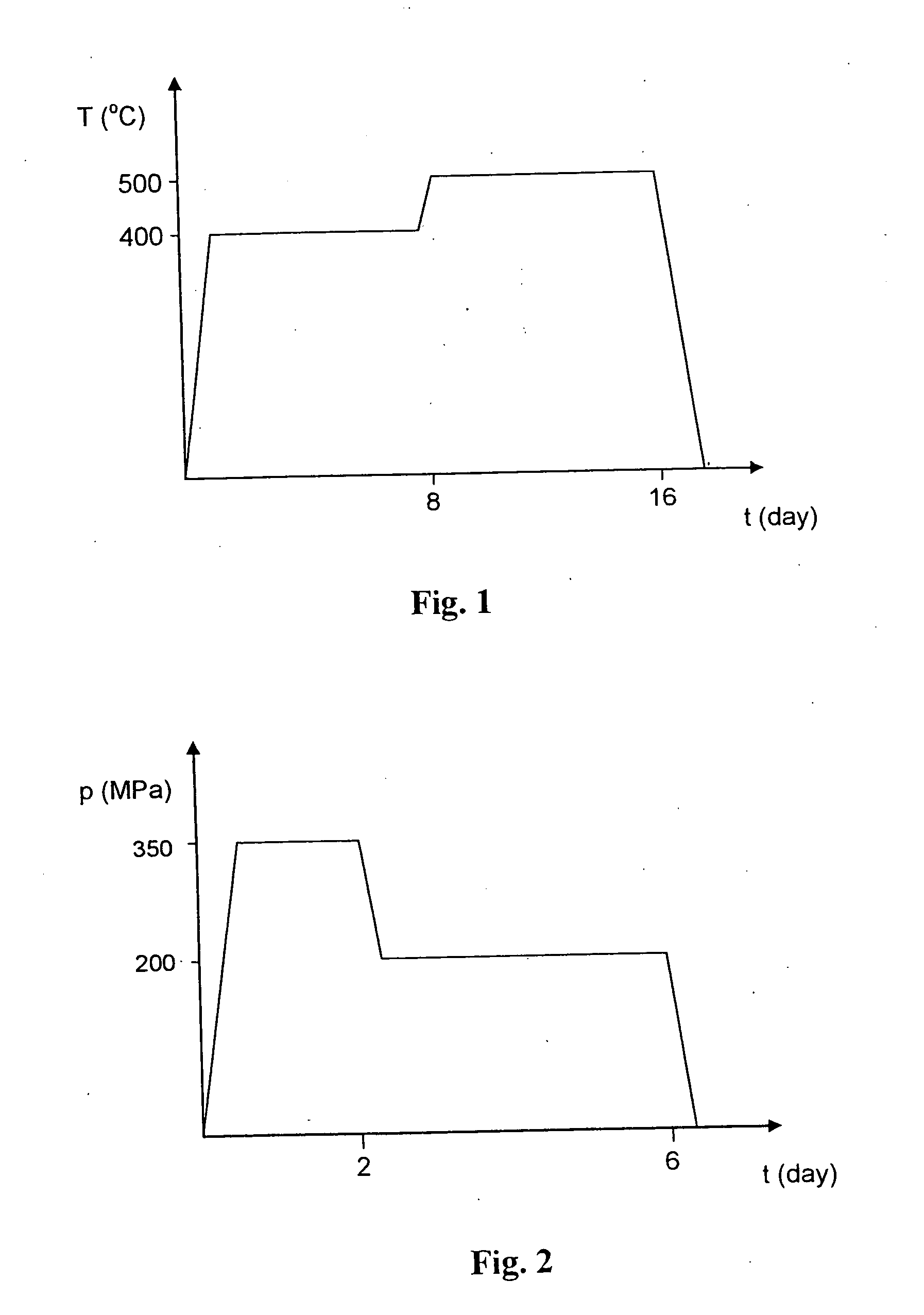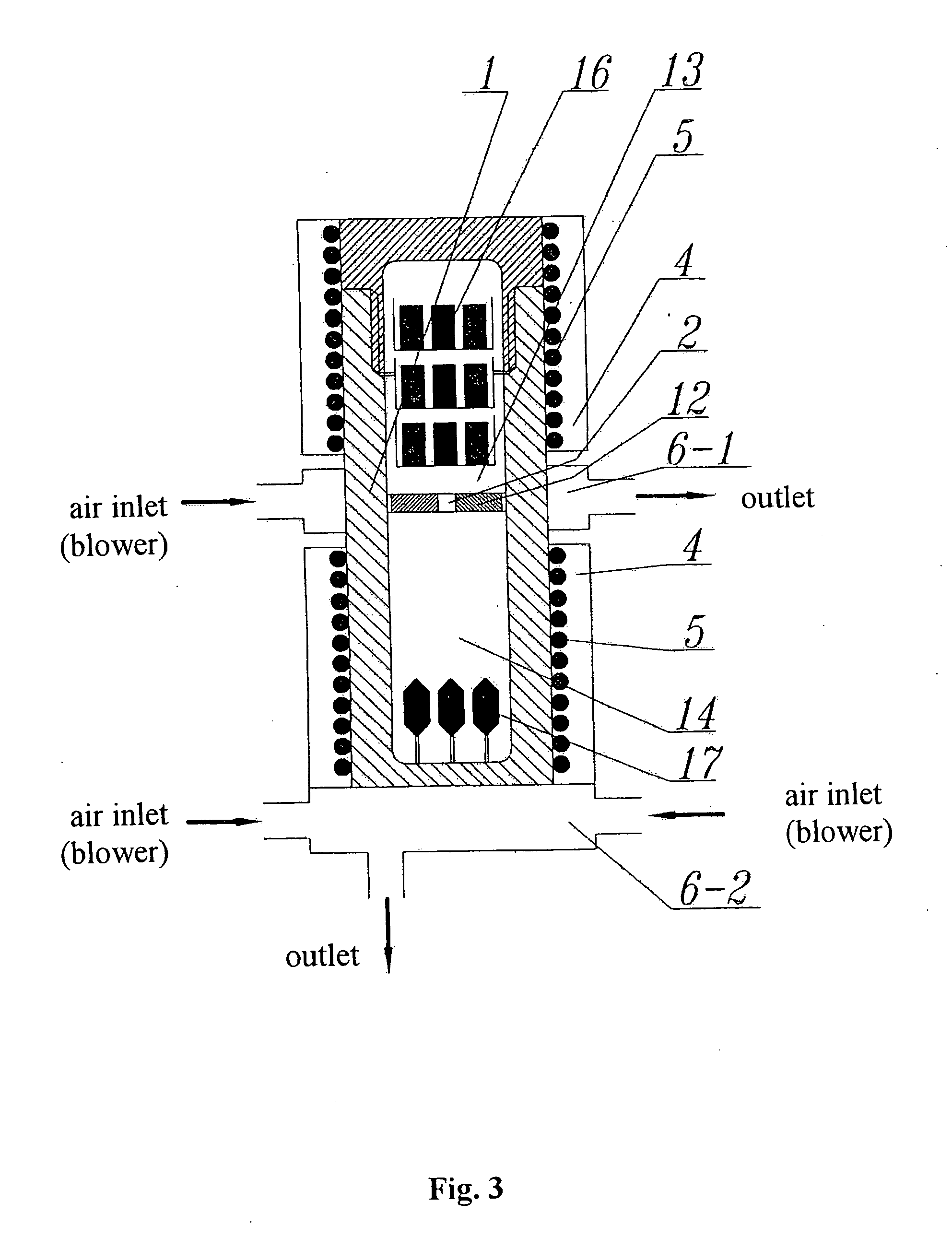Substrate for epitaxy and method of preparing the same
a technology of substrates and epitaxy, which is applied in the direction of crystal growth process, polycrystalline material growth, transportation and packaging, etc., can solve the problems of substrate epitaxy face area decrease, density is still too high to ensure the correct functioning of many electronic and opto-electronic devices
- Summary
- Abstract
- Description
- Claims
- Application Information
AI Technical Summary
Benefits of technology
Problems solved by technology
Method used
Image
Examples
example
[0088] The dissolution zone 13 of a 600 cm3 high pressure autoclave 1, having the inner diameter of 40 mm and length of 480 mm, was charged with 53.0 g of feedstock in the form of metallic gallium (6N). The crystallization zone 14 of the same autoclave was charged with a seed crystal in the form of a gallium nitride wafer (having the diameter of about 1 inch and the mass of 2.0 g) obtained by means of A-axis direction growth in the supercritical ammono method as shown in FIG. 9. (the seed is made of the wafer having a length (L), an A-axis direction growth (W) from both sides of A-plane and edge periphery of M-planes) As the mineralizer, 12.0 g of 4N metallic sodium as well as 19.5 g of 4N metallic potassium were put into the autoclave. Next, the autoclave was filled with 255.0 g of ammonia (5N), tightly closed and put into a set of furnaces 4. The temperature of the dissolution zone 13 was raised to 450° C. (at 1° C. / min, FIG. 6), while the crystallization zone was not heated and i...
PUM
 Login to View More
Login to View More Abstract
Description
Claims
Application Information
 Login to View More
Login to View More - R&D
- Intellectual Property
- Life Sciences
- Materials
- Tech Scout
- Unparalleled Data Quality
- Higher Quality Content
- 60% Fewer Hallucinations
Browse by: Latest US Patents, China's latest patents, Technical Efficacy Thesaurus, Application Domain, Technology Topic, Popular Technical Reports.
© 2025 PatSnap. All rights reserved.Legal|Privacy policy|Modern Slavery Act Transparency Statement|Sitemap|About US| Contact US: help@patsnap.com



